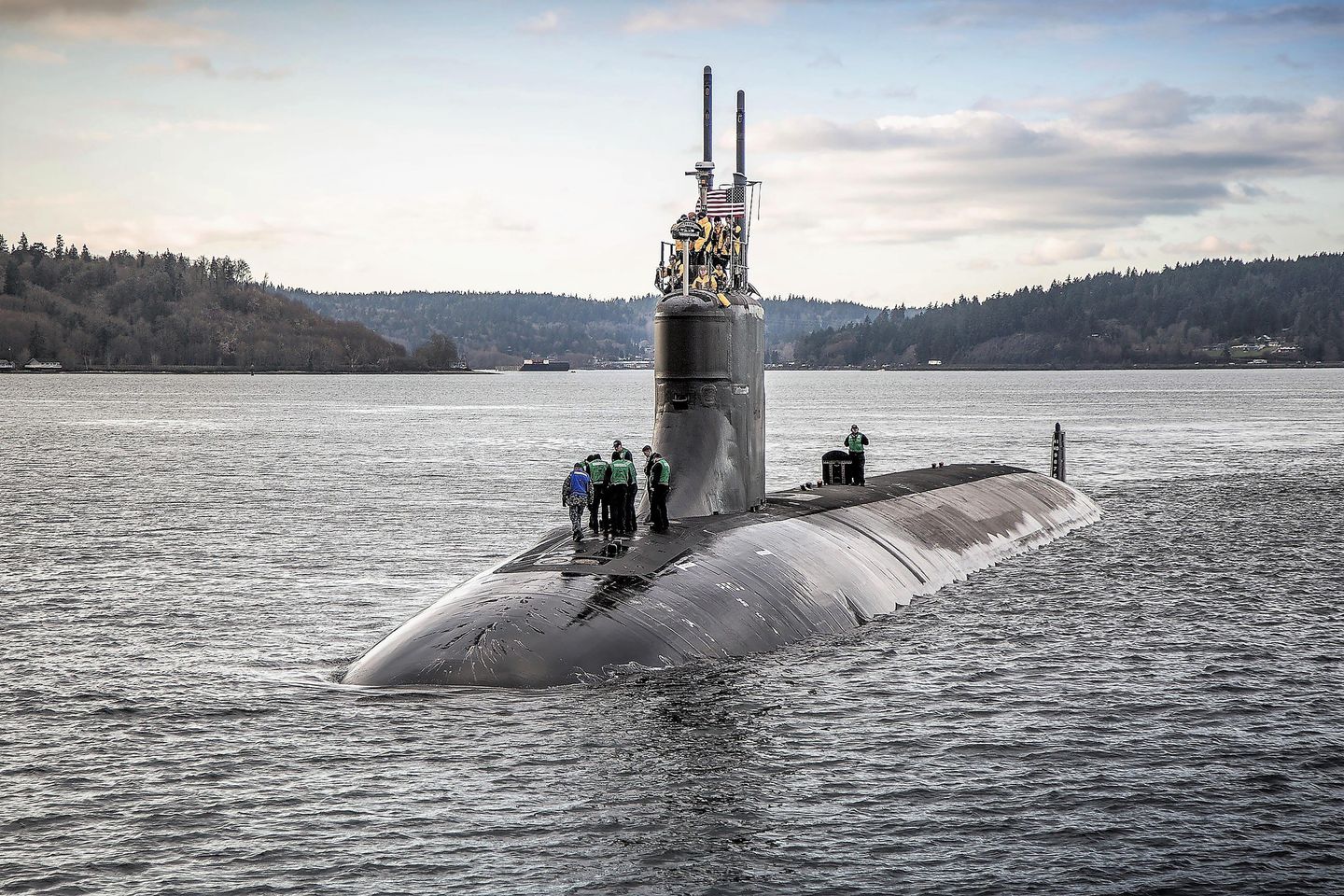

A U.S. Navy investigation has determined that the nuclear attack submarine damaged in a collision in the South China Sea in early October struck an uncharted underwater mountain, defense officials said Monday.
The Navy’s U.S. 7th Fleet commander Vice Adm. Karl Thomas is now conducting a review of the findings to determine whether any additional accountability measures will be taken, U.S. Naval Institute News reported.
“The investigation determined USS Connecticut grounded on an uncharted seamount while operating in international waters in the Indo-Pacific region,” 7th Fleet spokesperson Cmdr. Hayley Sims said in a statement. Vice Adm. Thomas “will determine whether follow-on actions, including accountability, are appropriate.”
Eleven of the nearly 140 sailors on board the USS Connecticut were injured in the collision. The majority of the injuries were minor. Two of the sailors sustained “moderate” injuries.
The incident, which happened on Oct. 2 amid heightened tensions between China and Taiwan, was not reported by the Navy until days later as the submarine transited to Guam where it is undergoing initial repairs. The Chinese government, which has clashed with the U.S. and its allies over competing sovereignty claims in the heavily trafficked waterway, have launched a concerted propaganda campaign over the sub incident.
Chinese Foreign Ministry spokesman Wang Wenbin on Tuesday again accused the U.S. of a “lack of transparency and responsibility” regarding the incident, which reignited tensions between the U.S. and China over operations in the South China Sea.
“We once again urge the U.S. to give a detailed account of the accident,” Mr. Wang said.
Speaking before the U.S. Navy statement was released, Mr. Wang said the U.S. had not provided details as to the “specific location of the accident” and has not offered “clear explanation” of what the submarine was doing in the area.
“The key is that the US military should stop sending warships and warplanes everywhere, showing its military muscles and violating other countries’ security. If not, this kind of accident will only take place more often,” Mr. Wang said.
The U.S. has long contested China’s claims of sovereignty in the South China Sea and insists international freedom of navigation norms be maintained in the region.
China’s state-controlled Global Times also piled on Tuesday fueling speculation that the collision could have resulted in “nuclear leakage,” and said the “root of the accident” was America’s “long-term presence in the South China Sea that stirs up trouble in the region.”
The vessel’s nuclear reactor and propulsion systems were not damaged in the collision, according to USNI News. But damage to the ballast tanks on the forward section of the submarine forced the crew to transit from the South China Sea to Guam on the surface.
The Navy is still determining the extent of final repairs needed for the submarine, which is home-ported at Naval Base Kitsap-Bremerton near Seattle.
